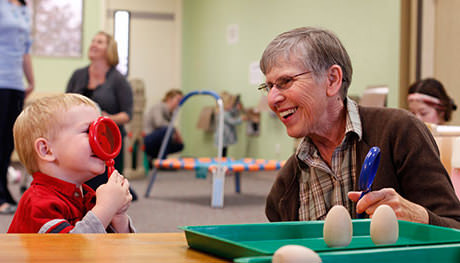Children see the world quite differently than we do. The world is new to them. They are experiencing so many "firsts" and trying to make sense of them. When we seek out their points of view, we gain valuable insights into their thinking, their questions, their fears, and the things that tickle their fancy and delight them. Take time to listen and watch closely. Let their perspectives inform everything you do in your day-to-day practice.

Young children are beginning to construct a picture of what the world looks like and how things are supposed to be. This predictability provides confidence and a platform for new learning. It also sets biases and prejudices that stay with the child into adulthood.
Read these things children might say, and consider their perspectives as you choose how to respond.
Use this template to record your observations, thoughts, and feelings. Download the Template
Deepen your understanding by reviewing Performance Area 1: Respect for all differences and similarities in the CA ECE Competencies. Scroll to page 22.
Can you find other places in this competency area that address your interests and needs?

Here is a description of the goals of anti-bias curriculum. Consider each one as you plan learning goals for yourself and the children.
Each child will demonstrate self-awareness, confidence, family pride and positive social identities. This means creating the educational conditions in which all children are able to like who they are without needing to feel superior to anyone else. It also means enabling children to develop biculturally, and helping children and their families to resolve the problems faced when a person has to operate in more than one culture.
Each child will express comfort and joy with human diversity; accurate language for human difference; and deep, caring human connections. This means guiding children's development of the cognitive awareness, emotional disposition, and behavior skills needed to respectfully and effectively learn about differences; comfortable negotiate and adapt to differences; and cognitively understand and emotionally accept the common humanity that all people share.
Each child will increasingly recognize unfairness, have language to describe unfairness, and understand that unfairness hurts. This means having the cognitive skills to identify "unfair" and "untrue" images (stereotypes), comments (teasing and name-calling) and behaviors (discrimination) directed at one's own or another's identity (be it gender, race, ethnicity, disability, class, family lifestyle, age, weight, etc.) AND have the emotional empathy to know that bias hurts.
Each child will demonstrate empowerment and the skills to act, with others or alone, against prejudice and/or discriminatory actions. This "activism" objective includes helping every child learn and practice a variety of ways to act: (a) when a child acts in a biased manner towards another; (b) when an adult acts in a biased manner. Goal 4 builds on Goal 3: Critical thinking and empathy are necessary components of acting for oneself or others in the face of bias. These four goals are for children across all age groups. They are also for the adults who raise and teach children. The content and specific objectives for each child/adult and group of children/adults must be chosen within a developmentally-appropriate and a contextually appropriate framework.
Anti-Bias Education for Young Children and Ourselves, Louise Derman Sparks & Julie Olsen Edwards, 2010, NAEYC, pp. 3-6.